You may not find this terribly rewarding unless you're included here, so this is a good time for casual and random browsers to turn back before they get too caught up in the sweep and majesty of the proceedings and can't let go.
Grinzane Cavour, Serralunga d'Alba, Barolo, 19 May 2018
Castello di Grinzane Cavour
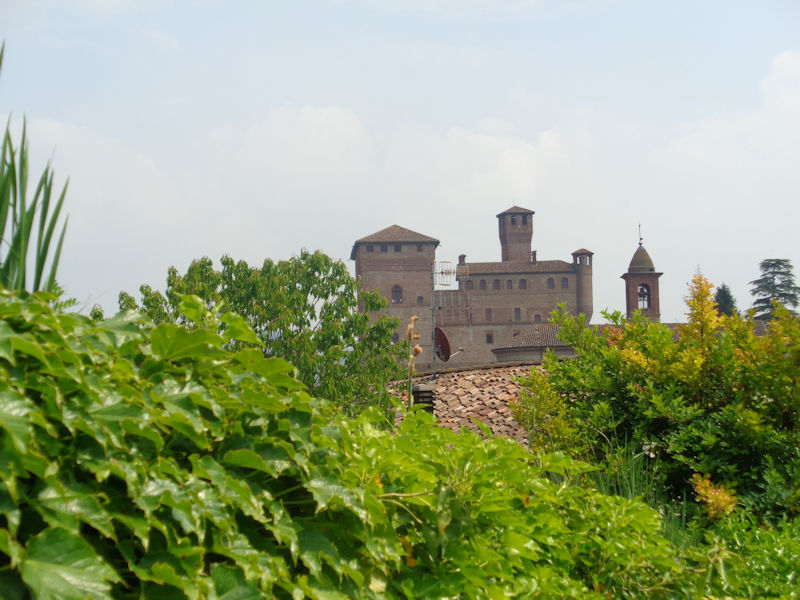
A look up the hill at the Castle of Grinzane Cavour -- Grinzane Cavour is a tiny hilltop comune in the province of Cuneo, just 6km southwest of the old centre of Alba; our Airbnb Tenuta Calabiana, in the Valle Talloria district of the nearby hilltop village of Diano d'Alba, is just one kilometre down the hill from the castle.
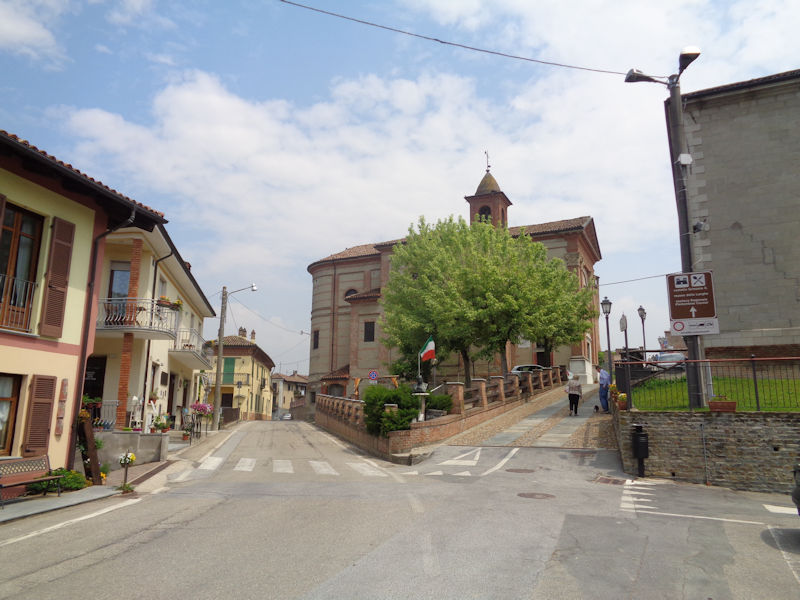
Bustling downtown Grinzane Cavour, in the heart of the Langhe, the hilly area south and east of the Po tributary, the river Tanaro, a beautiful region famous for its wines, cheeses, and truffles, and for its small castles and villages atop vineyard-covered slopes. Part of the Langhe was designated as a UNESCO World Heritage site in 2014, called 'Vineyard Landscape of Piedmont: Langhe-Roero and Monferrato' but including this castle specifically.

The comune of Grinzane acquired the additional 'Cavour' in homage to its most famous resident, Camillo Paolo Filippo Giulio Benso, Count of Cavour, Isolabella and Leri (1810–1861), who was born in Torino but moved into the family property here in 1830 at the age of 20 and spent some years as an agriculturally innovative property owner and forward-thinking mayor of the town from 1832 to 1848. After which he became Prime Minister of the Kingdom of Piedmont-Sardinia from 1852 and, briefly, Prime Minister of the unified Kingdom of Italy in 1861.
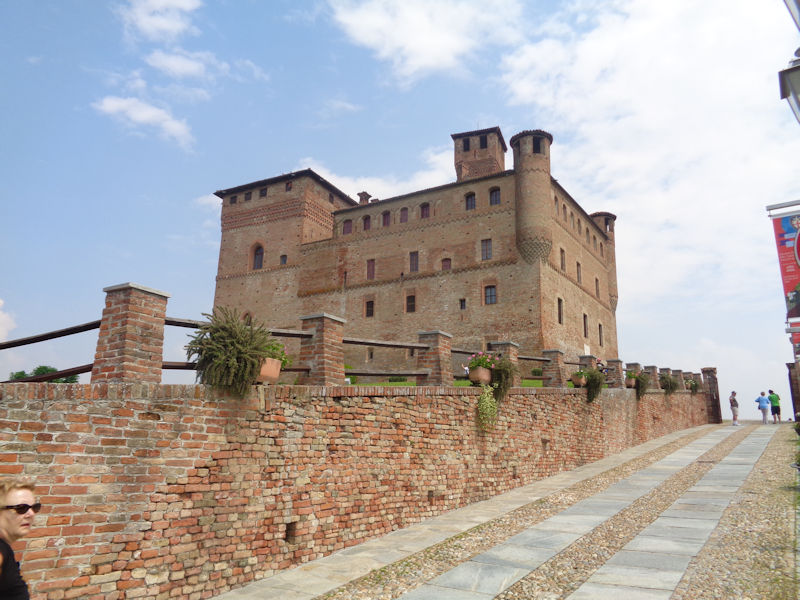
Little is known about the origins of the Castello di Grinzane Cavour, but it seems to have been begun life as a large tower in the 13th to mid-14th century. By the 15th century, presumably considerably enlarged, it was owned by the Marquis of Busca of the Lancia branch of the del Vasto branch of the ancient Frankish clan of the Aleramici lords of Liguria and Piedmont.
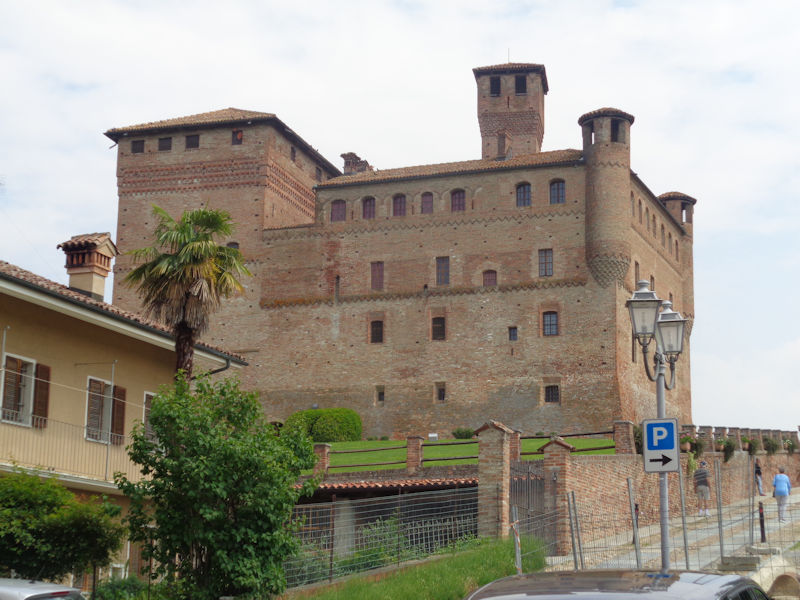
At least by the early 16th century, it was owned by members of the important banking family of Falletti, who had been acquiring properties throughout the region since having been established in Barolo after about 1250. The two cute rounded turrets were added in the 16th century.
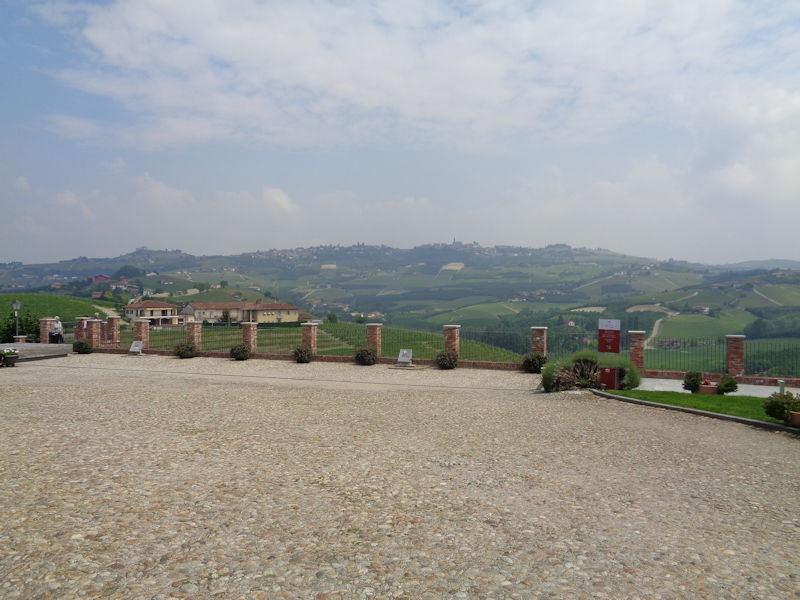
Vineyards and hilltop towns viewed from the terrasse surrounding the castle of Grinzane Cavour

The tour begins in the cellars, appropriate in wine and truffle country. The castle hosts the Museo delle Langhe, including the Enoteca Regionale Piemontese Cavour wine museum, the headquarters of the Knightly Order of the Truffles and Wines of Alba, and the National Organization of Cheese Tasters. It's also the home base of the World Auction of the White Truffles of Alba.

Up towards the living quarters. Mind your head.

The 'Hall of Masks' was used for village council meetings during Cavour's tenure as mayor. In 1546, evidently, the castle was bought by Pietrino Belli, a famous jurist from Alba who'd become a military judge and advisor to the Emperor Charles V, the Dukes of Savoy and of Mantua and Monferrato, and King Philip II of Spain. According to the info panel in the room, the heraldic decorations on the ceiling were commissioned for Belli's marriage to Giulia Damiani in 1567 (though the marriage seems actually to have taken place in 1541).
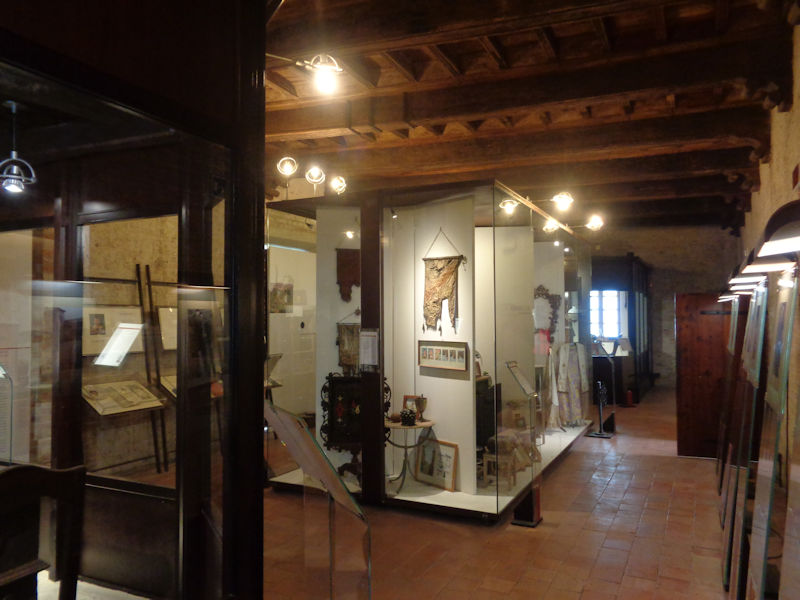
In the many rooms of the Ethnographic Museum, displays of traditional life in the Langhe region

With a special room for the life and achievements of Cavour himself
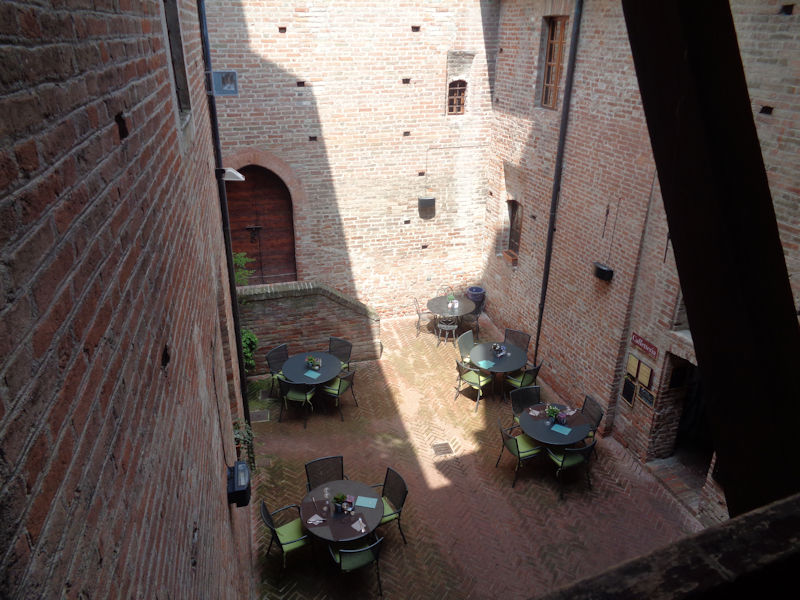
A look down into the courtyard, with its restaurant and cafeteria

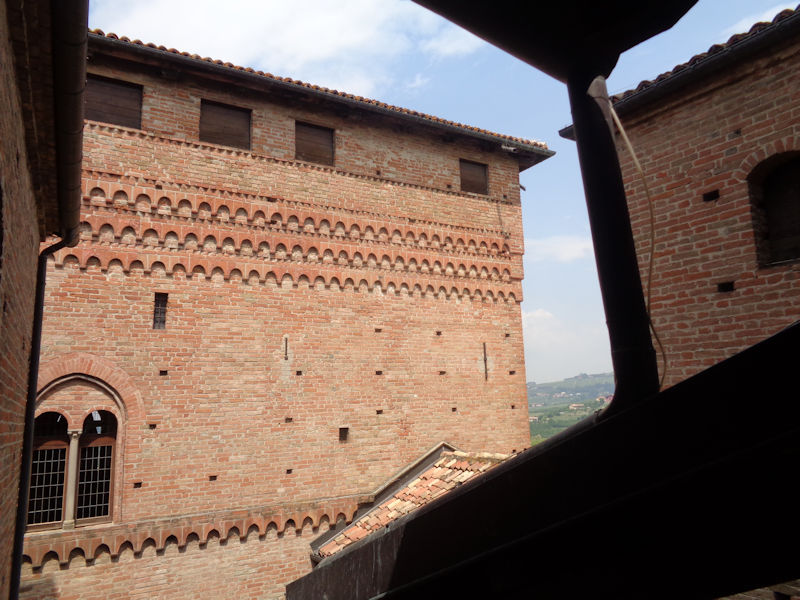
The tower keep
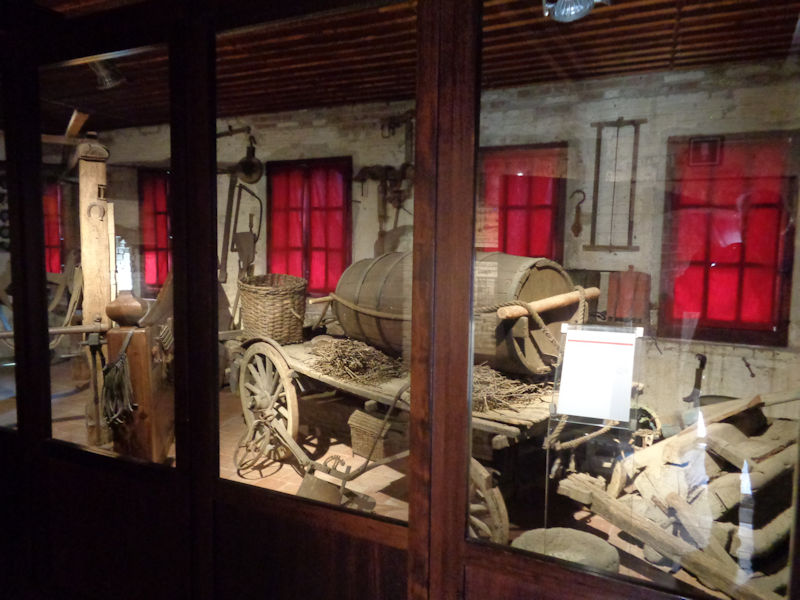
There are also displays, in the Sala delle Contadinerie, of life in the surrounding countryside (contado)


In the courtyard, the cafeteria and 'the Michelin Star restaurant, Marc Lanteri Al Castello'

Back in the barrel vaults on the groundfloor, the enoteca, set up in 1967 (following the castle's renovation in 1960) to feature wines of the Langhe region, particularly Barolo and Barbaresco

The neighborhood vineyards and hilltop comune of Diano d'Alba to the east

Views of the Cavour castle


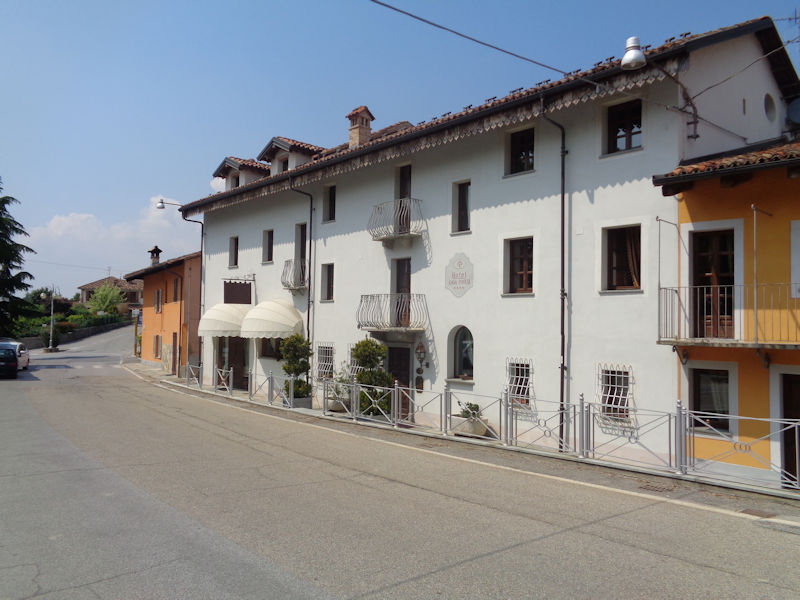
The Hotel Casa Pavesi at the foot of the castle's driveway. We'll be returning this evening to the La Salinera restaurant on the right, if our luck holds.

The Castello di Grinzane Cavour from the country roads to the south
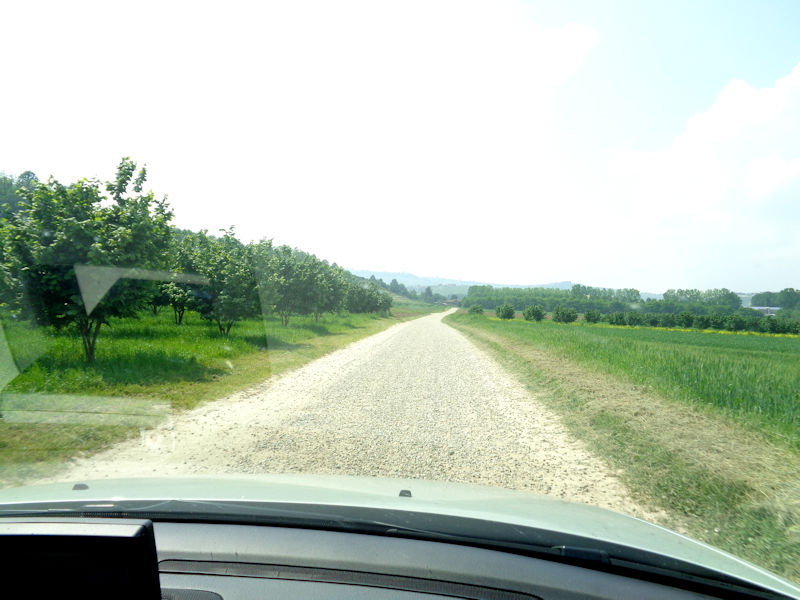
Back roads through the countryside

This may be why some motorists can be resentful of cyclists.
Castello di Serralunga d'Alba

Our next destination: the Castello di Serralunga d'Alba, in the tiny comune of about 550 citizens

From the parking on the SP125 road below
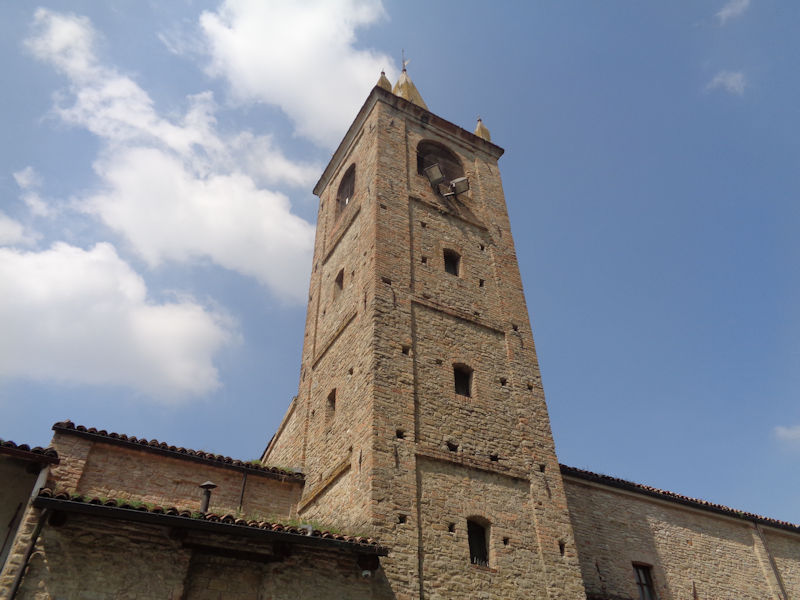
The church next door, just below the castle
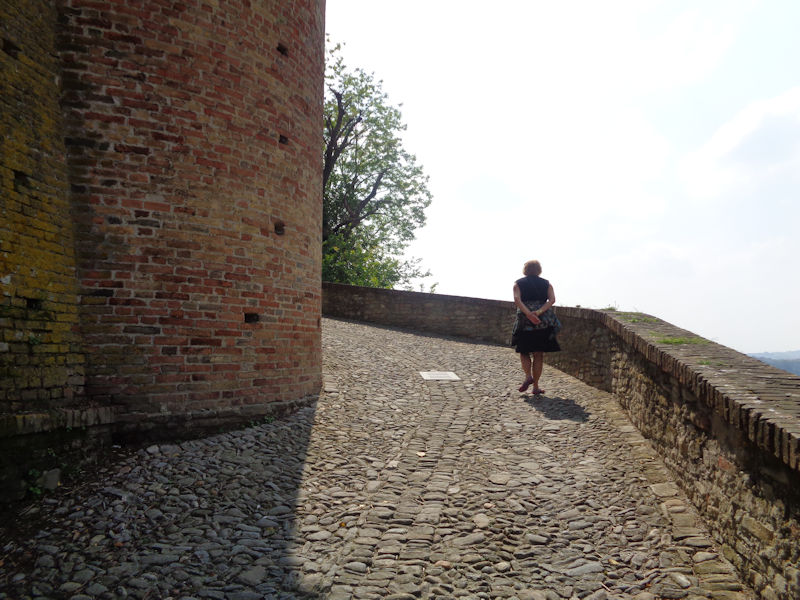
A direct assault on the Castello di Serralunga d'Alba
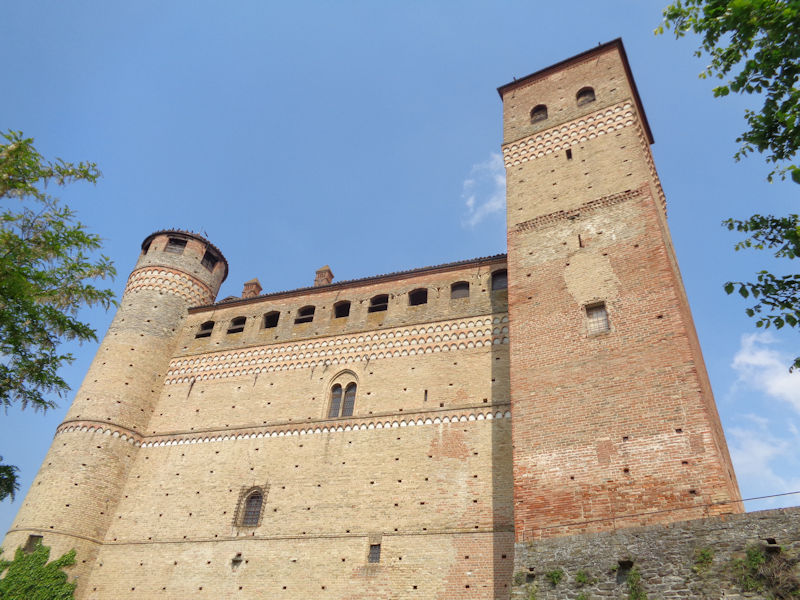
The castle was built between 1340 and 1357, when Pietrino Falletti received the fiefdom of Serralunga from the Marquis of Saluzzo -- the Falletti were an important banking and money-lending family, originally from Asti but for centuries extensive landowners throughout the Langhe district, with rights to something over 50 fiefs and properties in the region. With the end of that dynasty in 1864, the castle was owned by the Opera Pia Barolo, a foundation formed and seated in the Palazzo Barolo in Torino in order to carry on the Falletti family's charitable works, but it was acquired and restored by the Italian government in 1949.
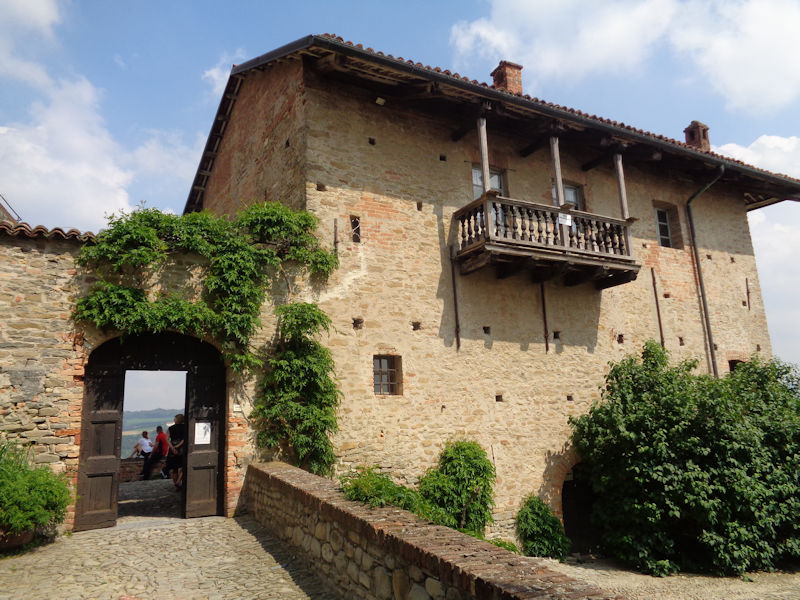
The entrance to the central courtyard. A system of intercommunicating watchtowers seems to have been present along these hilltops since the times of the Magyar and Saracen raids in the 10th century, and that appears to be the origin of the large square tower here, which evidently evolved into the 13th century 'castrum' on the site. The multi-story 'palacium', as they describe it here, was connected to the tower in the 14th century reconstruction and served as a residence as well as a 'place of representation', and the cylindrical tower and turret were added at that time.

From the courtyard -- there was originally a cistern under the flooring here, capturing water for any eventualities.

This (if I recall) is the Salone dei Valvasorri, the Room of the Vavasours (or vassals who owe allegiance to the lord of the place).
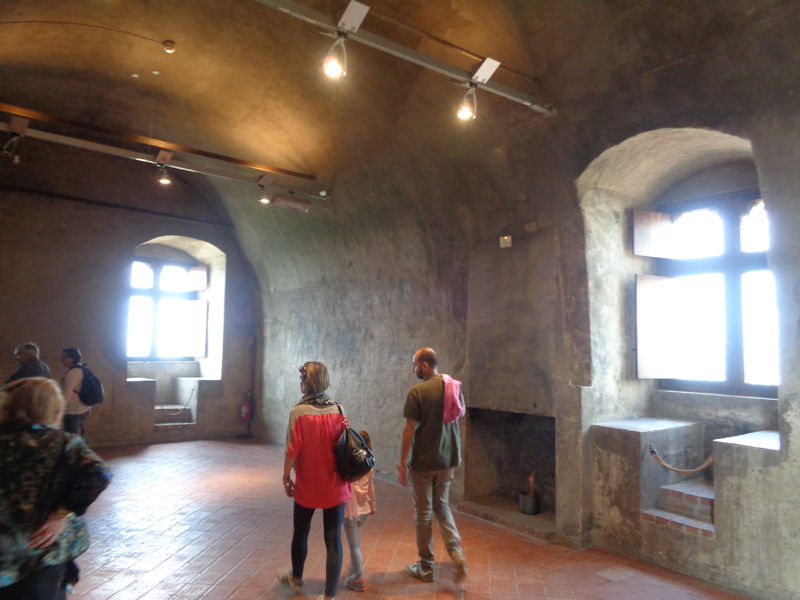
We're following our guide up through the three levels of 80 square metre rooms of the original square tower.

The shape of the castle, seen end-on as below, seems remarkable, but is said to reflect a 'donjon' architecture for such secondary castles common in France at the time. The width of the castle is the width of this room, in fact. Some of the rooms have huge fireplaces virtually side by side, indicating that these spaces had been divided into separate rooms back in the day.

-- Oh, beg your pardon. Carry on.
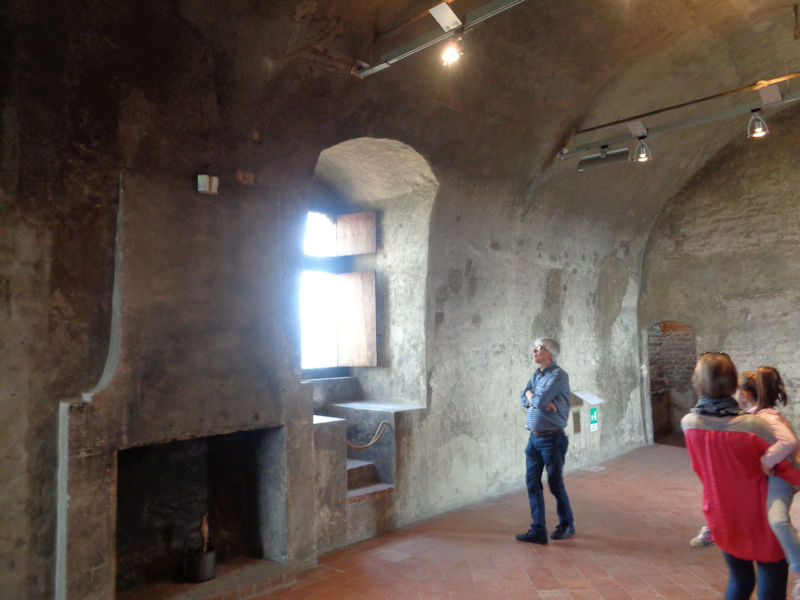
We're told that the castle was never captured by force, but it was occupied by Spanish troops in 1616.
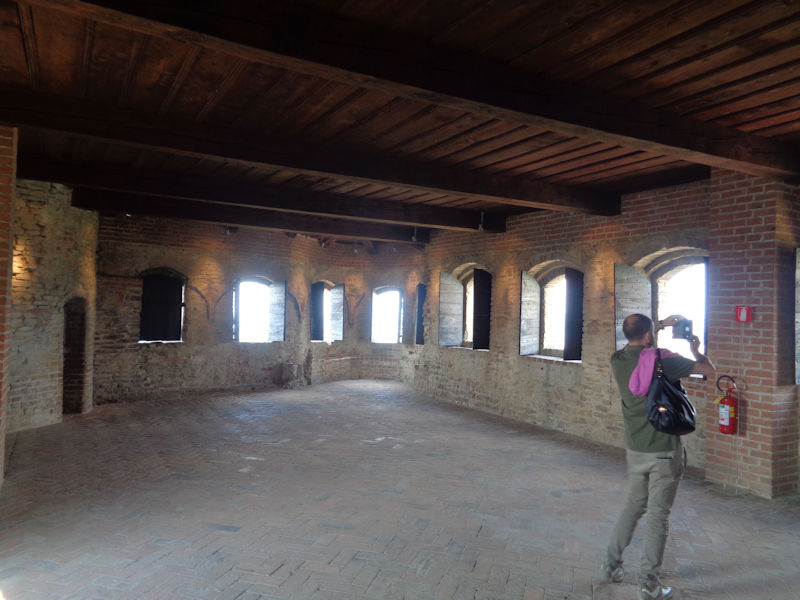
The battlements with a 360° view at the top of the square tower, now roofed over (with the remains of Ghibelline 'swallow-tail' merlons), and the 'hanging turret' at the far end; the larger circular tower is through the door on the left.
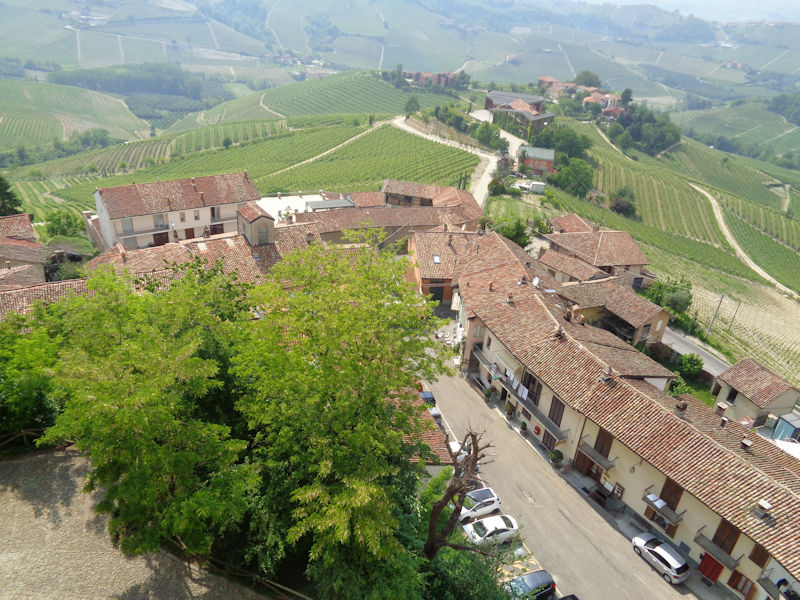
The village of Serralunga d'Alba below
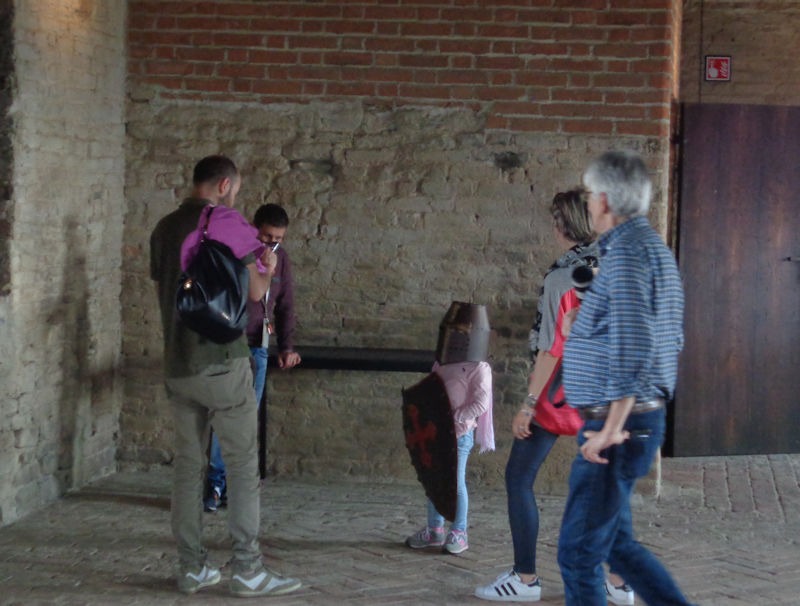
A chivalric wannabe
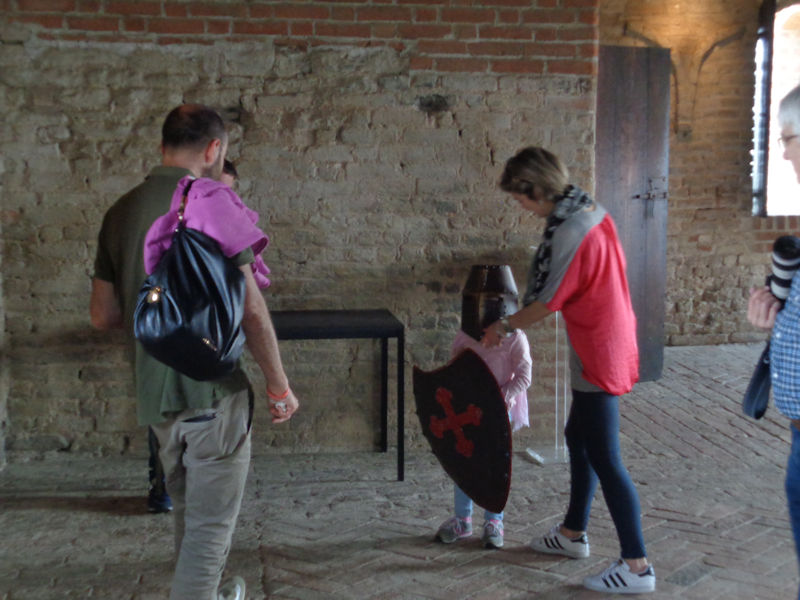
The knight's squire making adjustments to the defensive armor
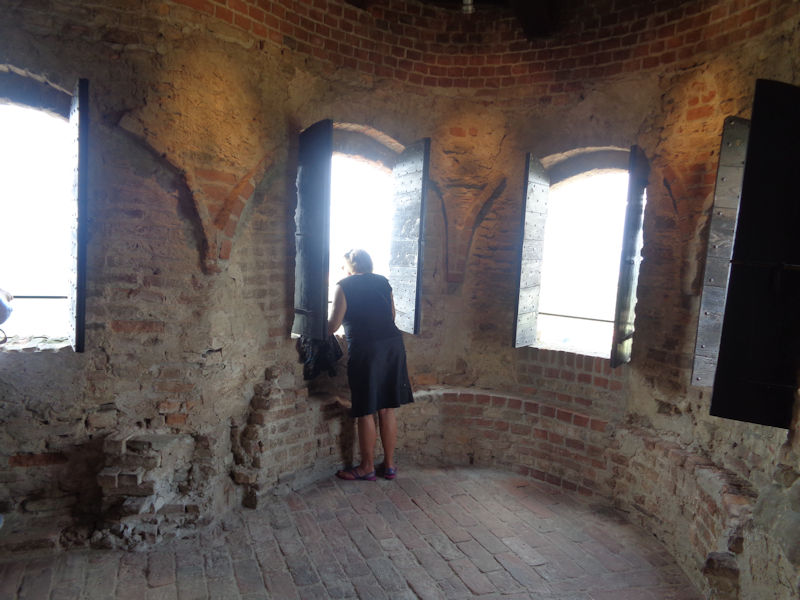
The watchlady in the turret
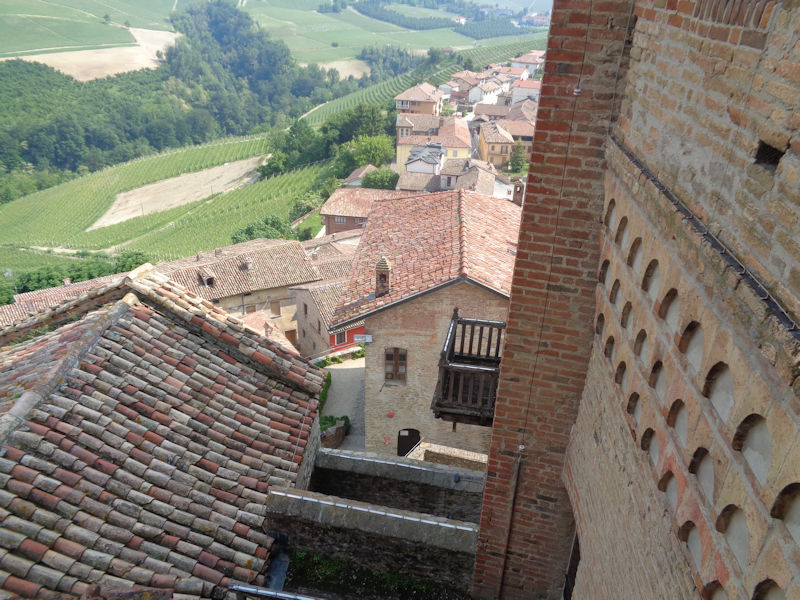
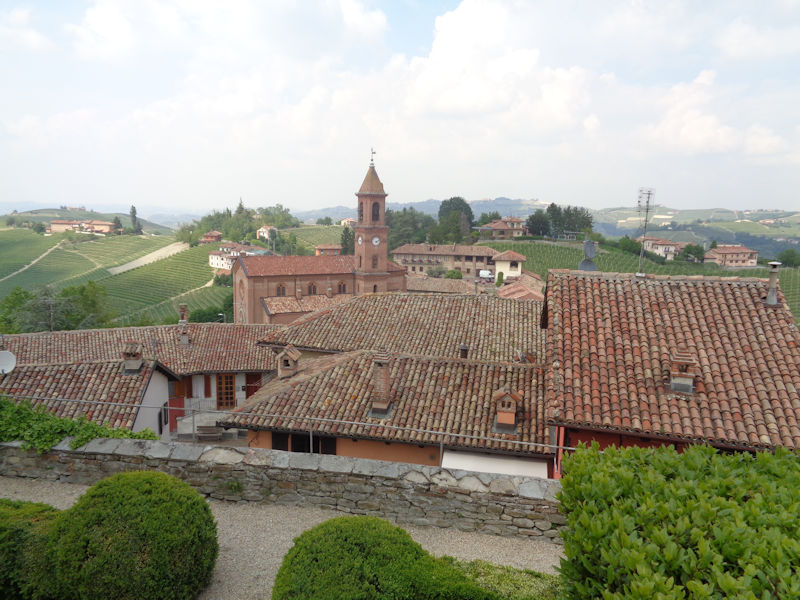
The castle gardens and the town below

The church downtown
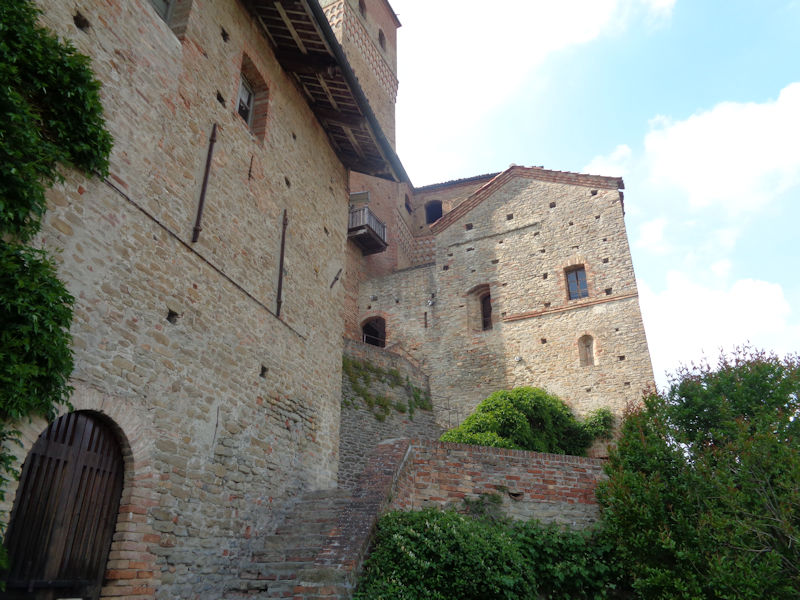
The view from gardens and public servizi
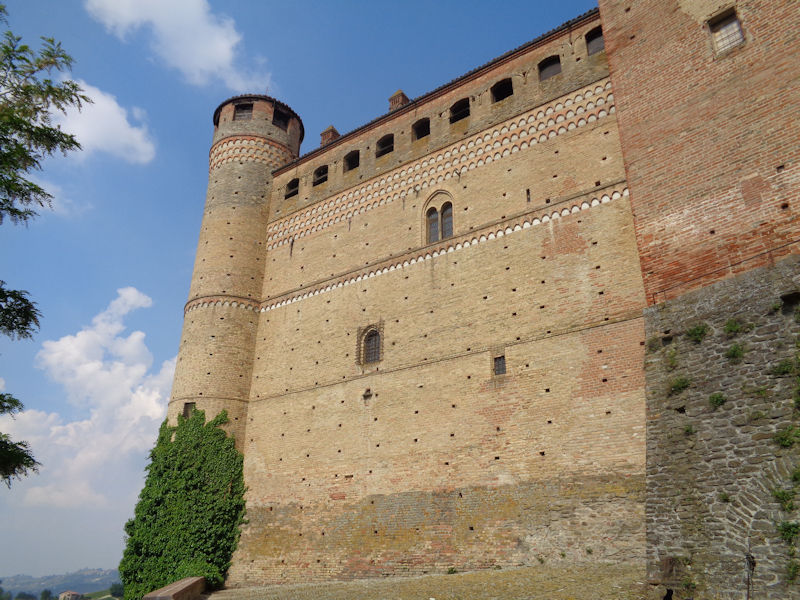
A penultimate view as we're leaving
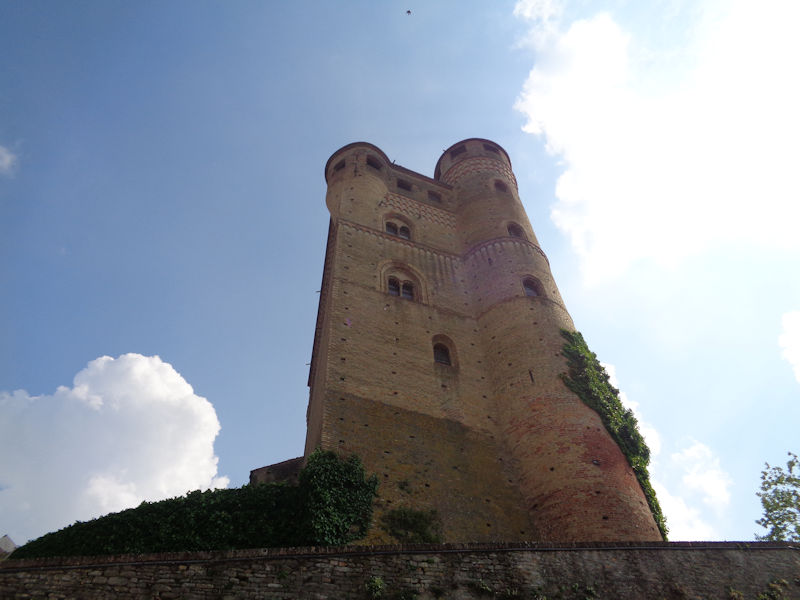
A striking end-on view, with the hanging turret on the left and the circular or cylindrical tower on the right.
Castello Falletti di Barolo
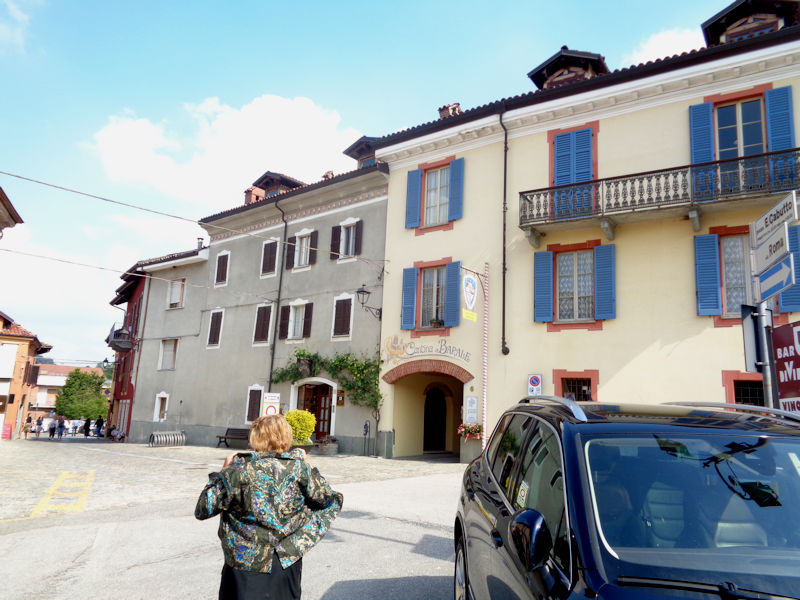
We set out just to find local castles, and we've ended up tracing the Falletti family's regional history. We're in Barolo, a kind of wine capital of northwestern Italy, or one of them, a small town of about 750 souls also in the province of Cuneo in the Piedmont region.
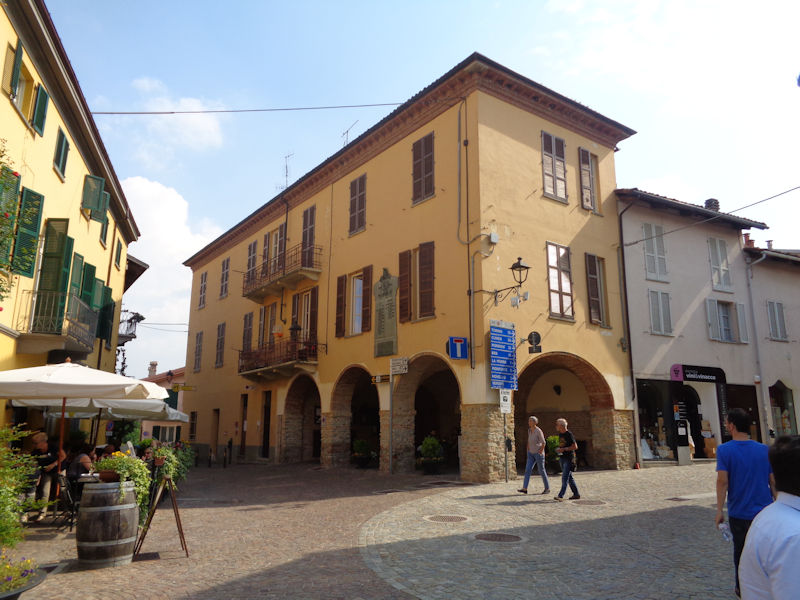
Along the Via Roma
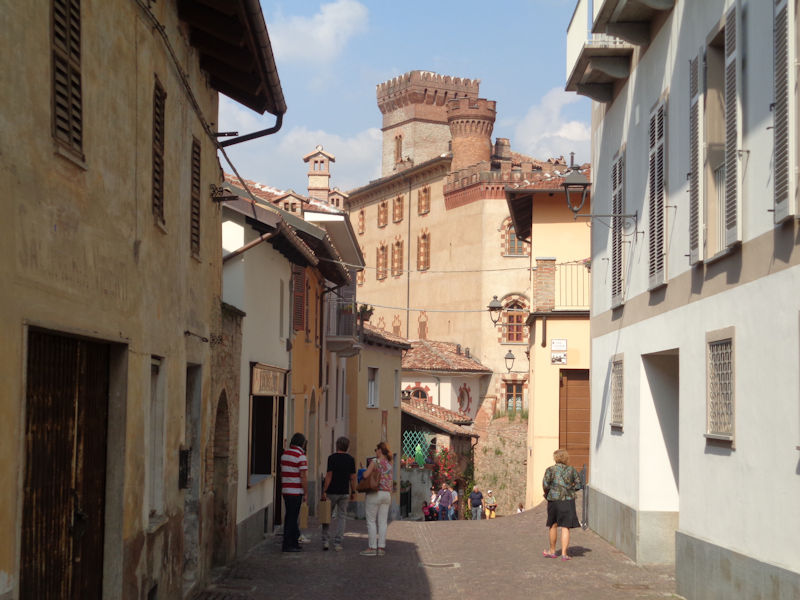
Here's the Castello Falletti di Barolo, not like most castles in the region perched on a hilltop but nestled into the hollow of downtown Barolo amongst the vineyard slopes. It's thought that the Barolo Castle began life when Berengar I of Friuli, King of Italy after 887 and Emperor after 915, granted to a local vassal the right to build a fortress here to ward off the frequent raids by the Hungarian Magyars and the Saracens of that time. Only the castle keep remains from that early structure.
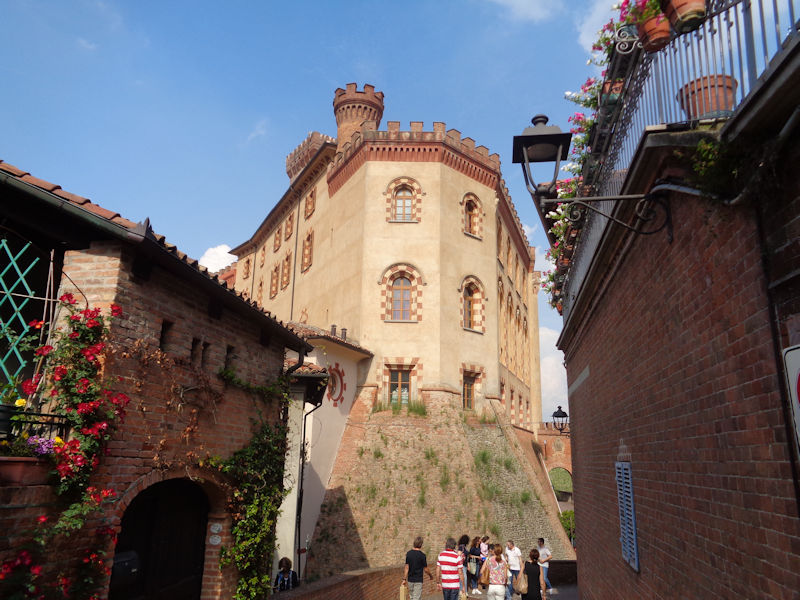
In the 13th century the property was deeded to the city of Alba, and came into the hands of the prosperous merchant and banking family of Falletti in about 1250. The Falletti set about converting the fortress into a residence suitable for a branch of the family, and by the early 16th century the town had grown up sufficiently around it that 30 houses had to be removed in 1524 to make room for the castle's enlargement.

In 1544 the castle was sacked and largely destroyed by French forces from nearby Cherasco, but Giacomo and Manfredo Falletti repaired the damage and greatly improved the defensive capabilities, and it's said that that 16th century incarnation remained basically unchanged through to the demise of the last Marchesa Falletti, the philanthropist Juliette Colbert Falletti de Barolo ('Giulia of Barolo'), in 1864. (The poet and patriot Silvio Pellico, by the way, whom we met in Saluzzo, was the Marchesa's librarian and friend after his release from prison.)

A direct assault on the Castello Falletti di Barolo
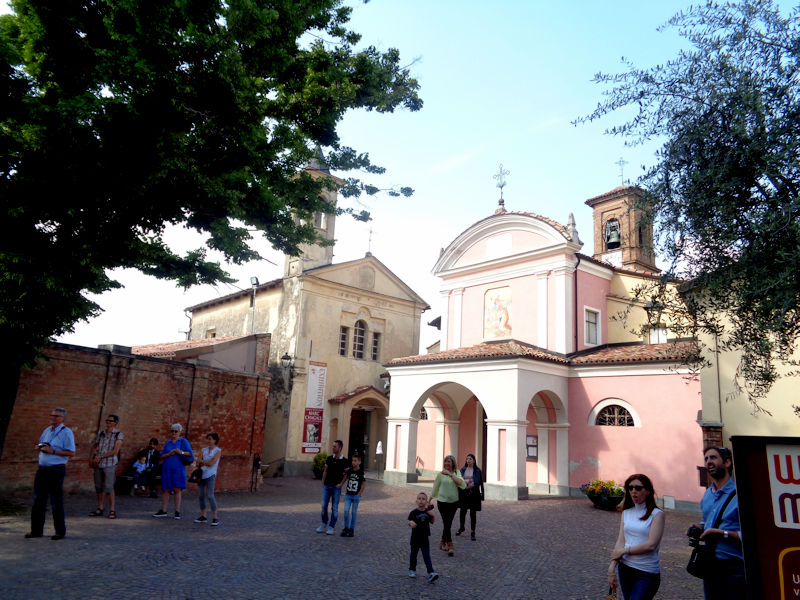
The two Catholic churches cheek by jowl in the piazza in front of the castle, with a lot of people standing round waiting for something.
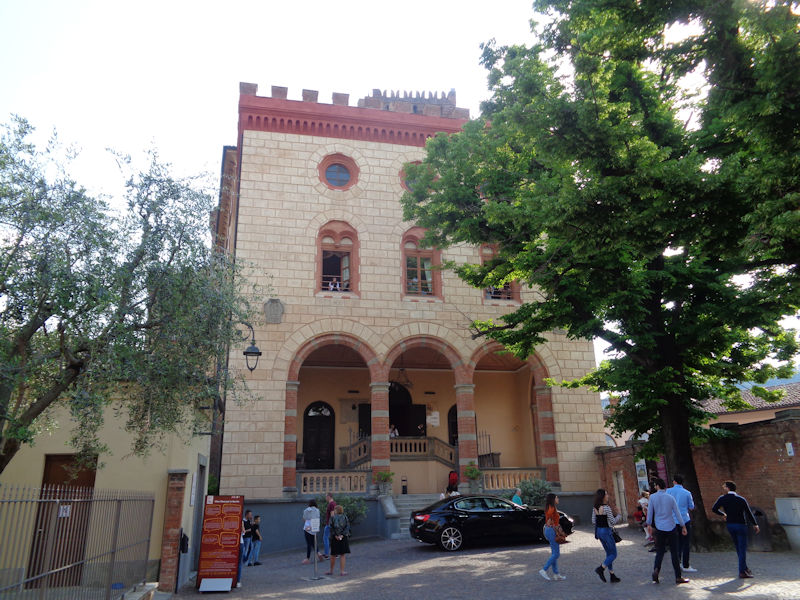
They're waiting for the bride, actually, who has just arrived -- one of the more festive rooms of the castle is going to be off limits to us casual tourists for a while.
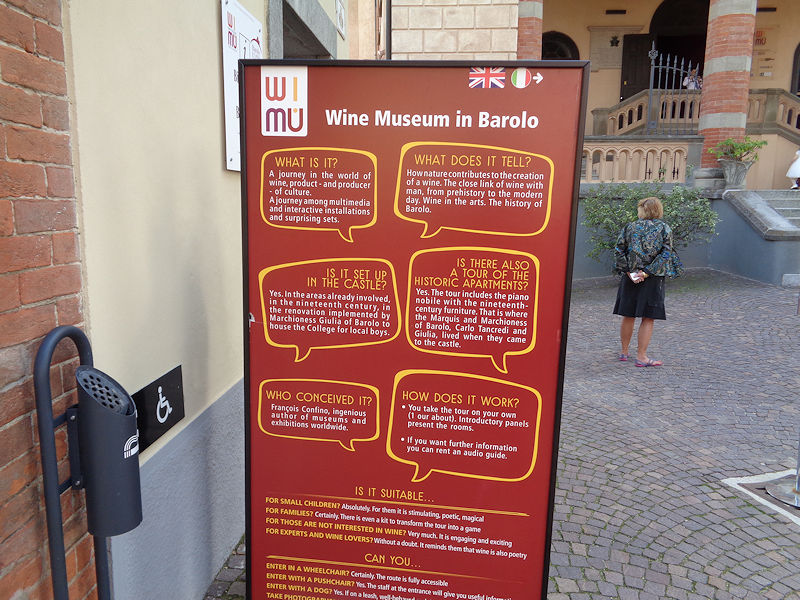
The castello is also home to the WiMu or Wine Museum of Barolo. The foundation Opera Pia Barolo, set up after the Marchesa's death to continue the family's work, took over the castle and restructured it to convert it into a college especially for less affluent local students, which was active until 1958. In 1970 the municipality bought the castle and set about restoring it, and since 2010 it has been the home of the WiMu, with extensive educational and promotional displays throughout.
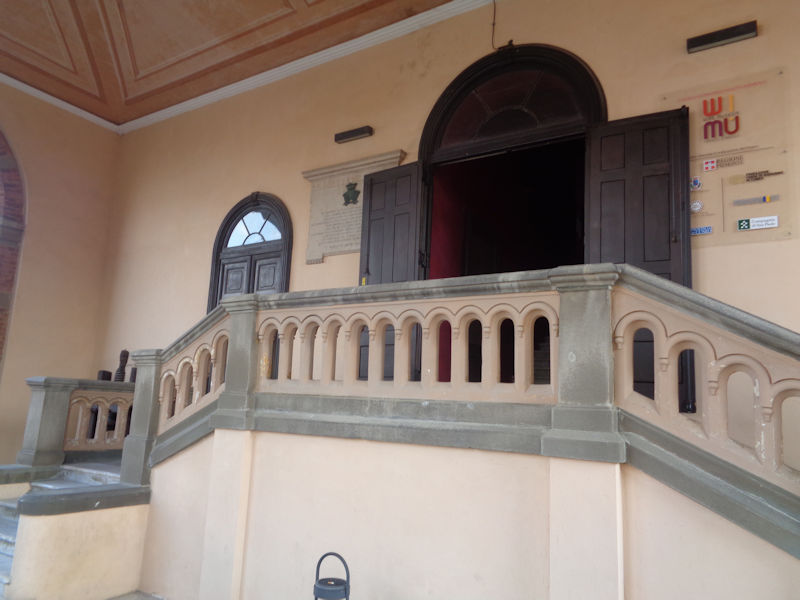
The wedding guests have been herded inside, so now we can slip past and take the tour.

The view from the castle battlements

Downtown Barolo

We're making the tour through the five floors of the wine museum, distinctly unimpressed, though perhaps we're not the target audience.
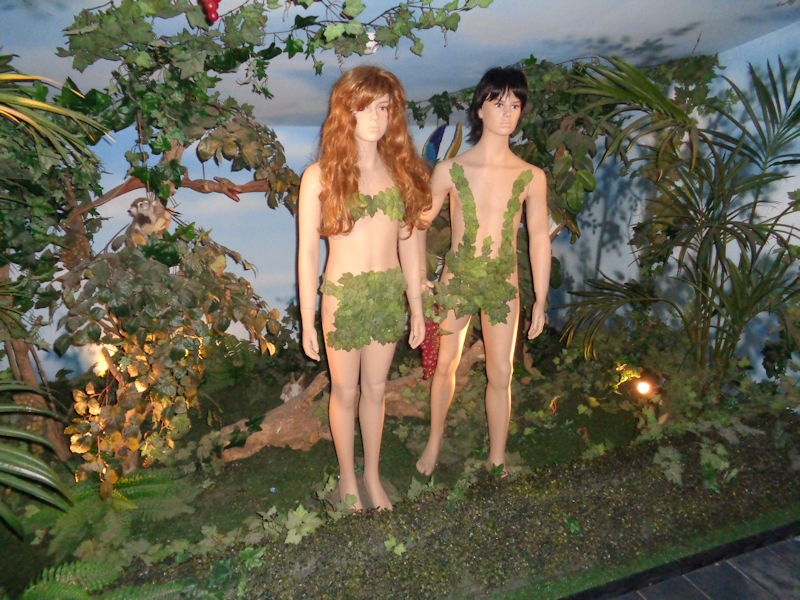
It's not easy to guess who the target audience might be though. Children, obviously, and the science and history of wine-making is covered in 'a total immersion into the world of wine'.

One floor of the castle is furnished in the style of the Falletti family's country house in the 19th century -- these odd displays, of which there are several, speak when toggled about castle life in that era, with moving videos of their mouths (as in the lady in white) that can seem pretty creepy.
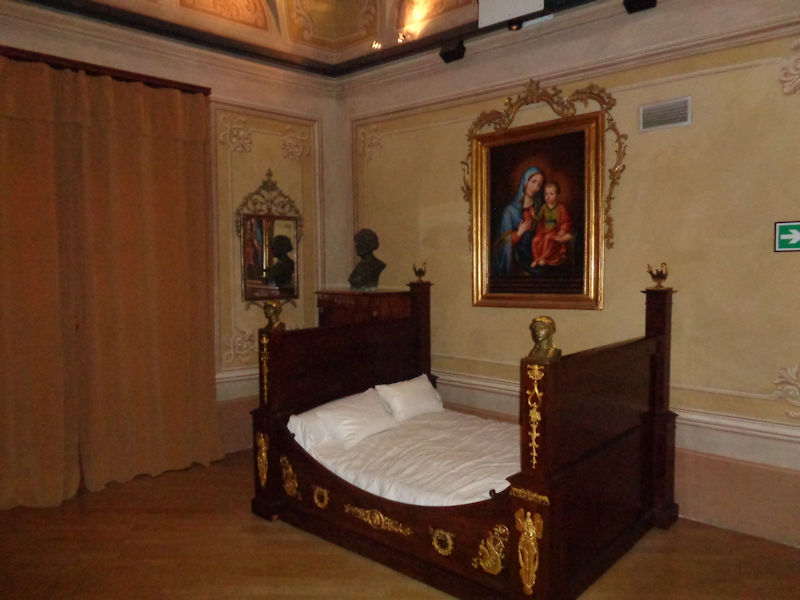
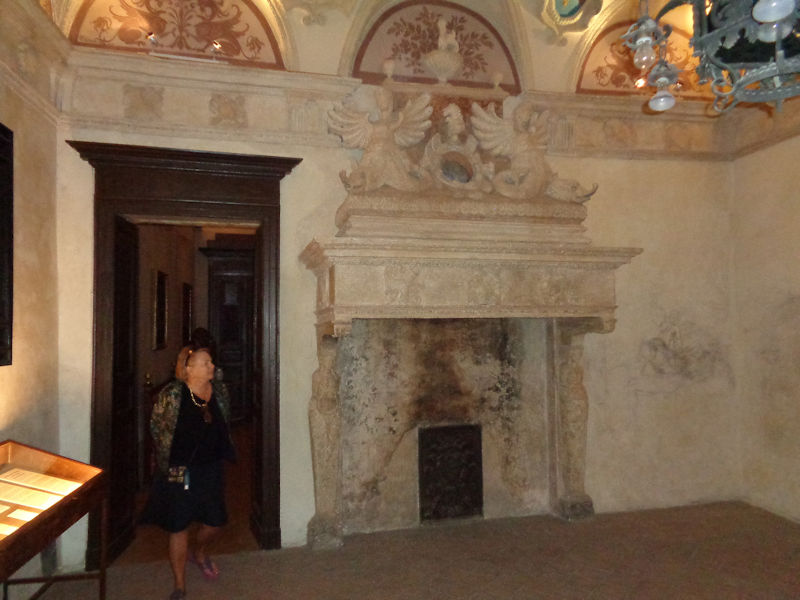
The recreation of the 19th century residence is a kind of homage to the last of the Falletti Marchesi, Carlo Tancredi Falletti and his wife Giulia and their important work in establishing the evolution and promotion of the Barolo wine with the Nebbiolo grape. Giulia herself was given the spiritual title of 'Venerable' by Pope Francis in 2015 for her philanthropic work and her founding of two religious orders for women.

It's time to leave.
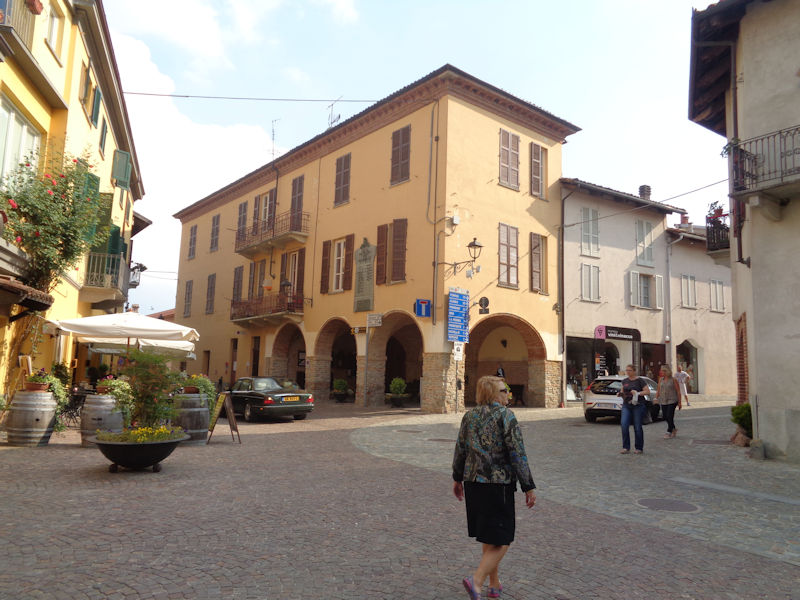
Downtown Barolo -- now for the 6km scenic drive back to our flat in the Valle Talloria.
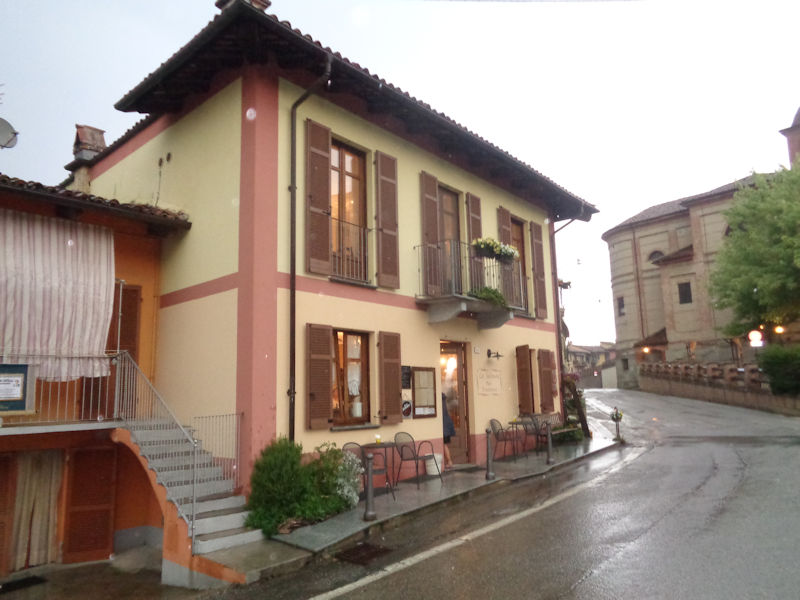
And an early evening dash through the rain to the La Salinera restaurant in Grinzane Cavour
Next: Views of Savigliano

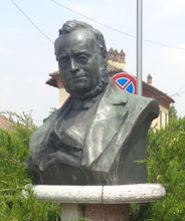 Dwight Peck's personal website
Dwight Peck's personal website



































































